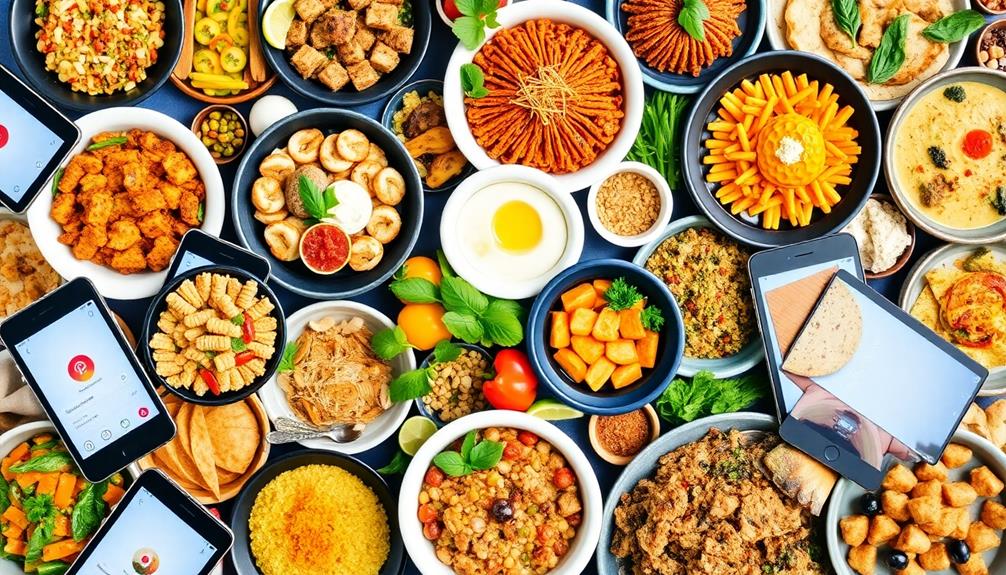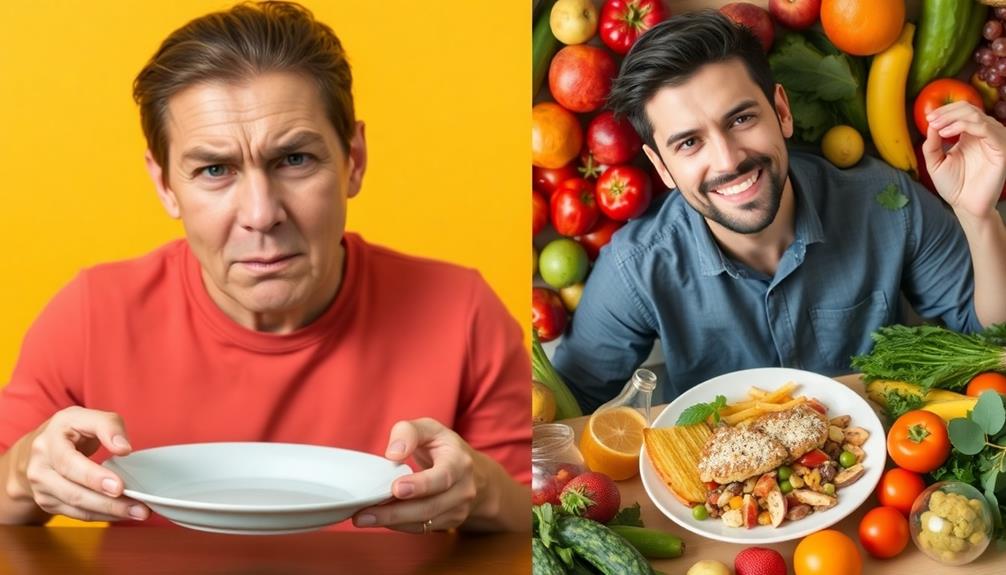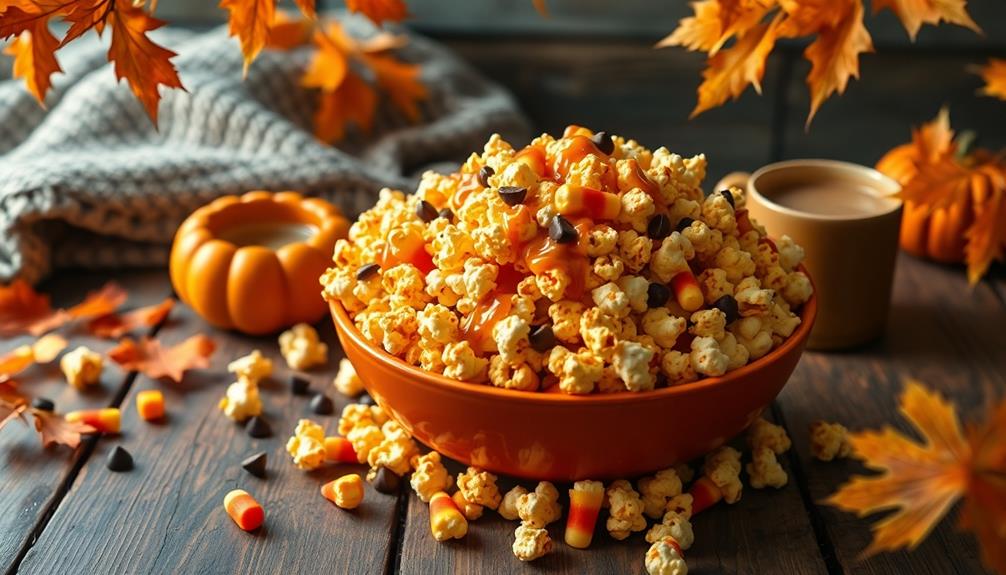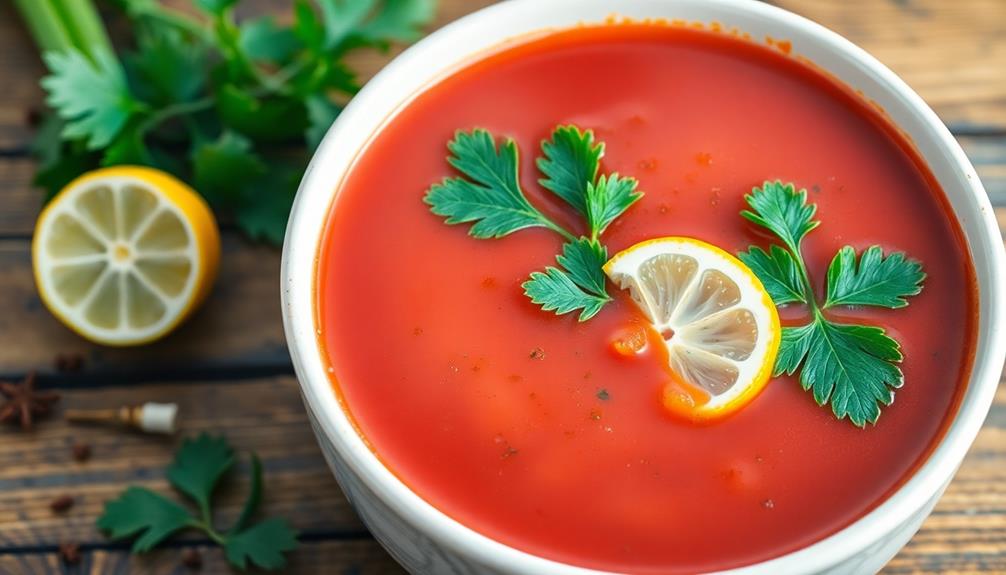In the digital age, food trends are heavily influenced by social media, changing how you discover and enjoy meals. Platforms like Instagram and TikTok showcase tempting content that affects your eating habits, often normalizing indulgent options. The emotional ties to food intensify as you connect with seasonal treats and shared experiences online. Influencers shape your preferences, leading you to explore niche foods that quickly become mainstream. Additionally, growing interest in sustainability prompts you to choose environmentally friendly options. If you're curious about how these elements blend together, you'll find even more insights waiting for you.
Key Takeaways
- Social media platforms significantly influence food choices and trends, with 88% of U.S. adults' food attitudes shaped by online content.
- Emotional connections to food are heightened by visually appealing social media imagery, leading to nostalgia and comfort-driven food choices.
- Influencers serve as modern tastemakers, rapidly elevating niche foods to mainstream popularity through authentic user-generated content.
- The digital landscape has shifted consumer behaviors toward prioritizing speed, safety, and transparency in food sourcing and purchasing.
- Increasing awareness of sustainability drives consumers, especially Millennials and Gen Z, to favor plant-based diets and brands with eco-friendly practices.
The Role of Social Media
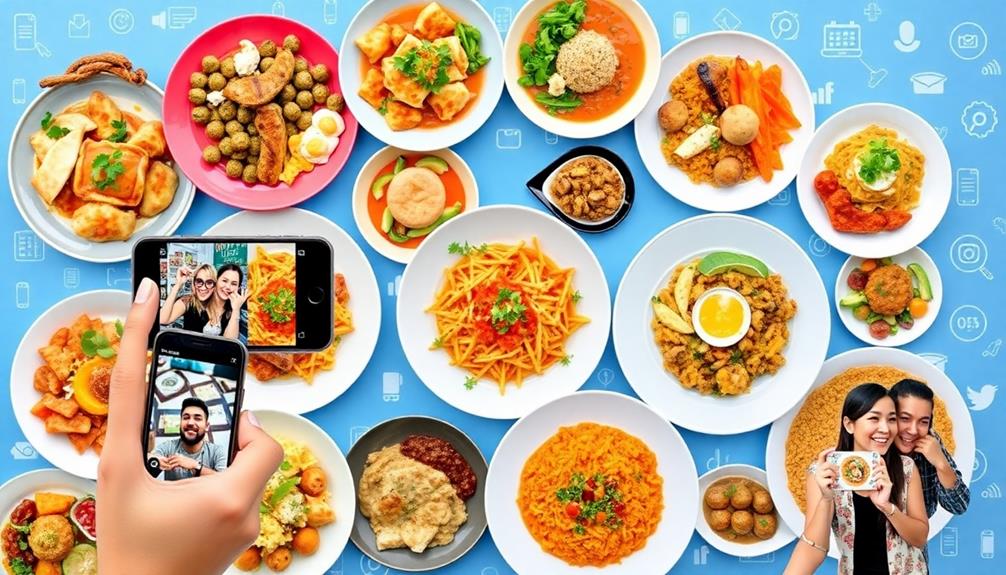
In today's digital age, the influence of social media on food trends is undeniable. Platforms like Instagram and TikTok have transformed how you discover and engage with food, making food-related content the fastest-growing topic on YouTube since 2014. As you scroll through your feed, you're likely part of the 88% of U.S. adults who eat while engaging with a screen, which heavily shapes your eating behaviors and food choices.
The vibrant imagery of dishes like Coconut Candy and Brigadeiro can easily capture your attention, further driving cravings for indulgent treats. User-generated content, especially food photography, normalizes indulgent foods and often distorts your perception of portion sizes, leading to overconsumption. You might find yourself craving those visually appealing dishes, even if they're unhealthy food options.
The Mukbang phenomenon, where hosts consume large quantities of food while interacting with viewers, further illustrates how social media creates unique eating experiences that can impact your own eating behaviors.
Moreover, emotional appeals and social influence are central to digital food marketing, especially targeting younger audiences. This exposure contributes to rising obesity rates among children and adolescents, as you watch and engage with these enticing food trends.
Social media platforms shape not just what you eat, but how you perceive and interact with food in your daily life.
Changing Consumer Behaviors
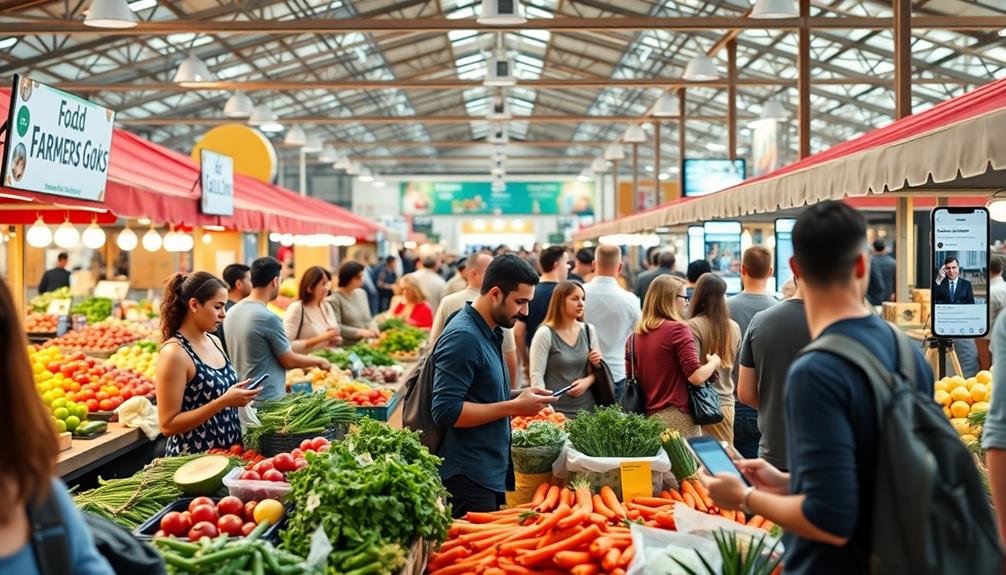
Today's consumers are experiencing significant shifts in their behaviors, largely fueled by the digital landscape. The COVID-19 pandemic has pushed many to prioritize speed and safety in grocery shopping, leading to a rise in e-commerce that transforms your eating behavior. Instead of savoring the sensory experience of in-store shopping, you're likely opting for quick, online purchases.
This shift has also encouraged an exploration of farm-to-table cooking, where you seek out fresh, local ingredients to enhance your meals, such as in dishes like Nettle and Potato Soup.
Digital media plays a vital role in shaping your food consumption choices. With 88% of U.S. adults eating while engaging with a screen, it's clear that your attitudes towards food are intertwined with social media. Platforms like Instagram and TikTok have become influential, especially for millennials and Gen Z, who often follow food trends showcased online.
As you navigate this evolving food culture, transparency in food sourcing has become essential. You crave empowerment and community, making informed choices that reflect your values.
User-generated content (UGC) is perceived as more authentic than traditional marketing, fostering a deeper connection with brands. This shift not only affects your purchasing decisions but also encourages a more conscious approach to healthy eating, aligning your food choices with your lifestyle preferences in the digital age.
Emotional Connections to Food
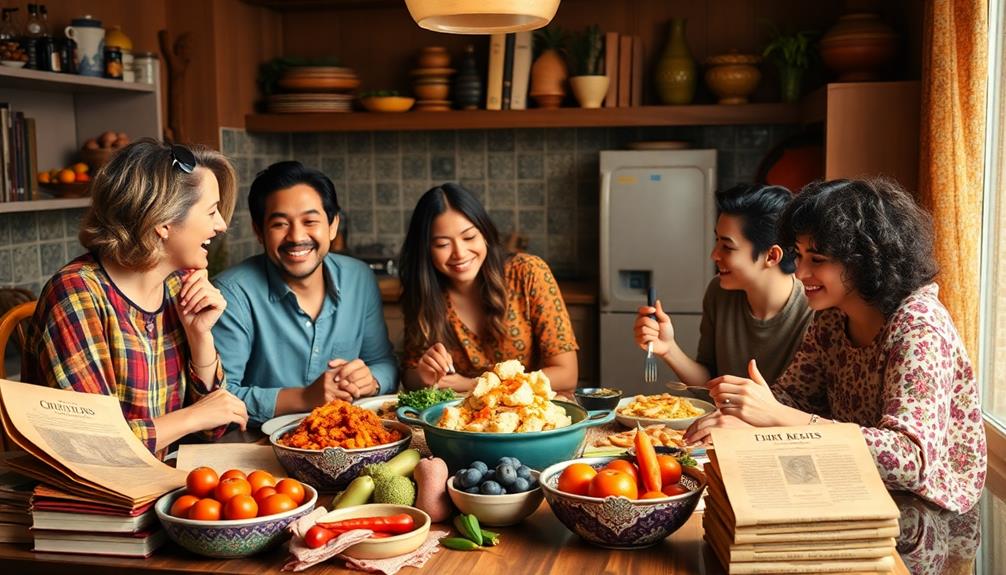
How do your feelings about food shape your experiences and choices? Your emotional connections to food are often intensified by social media, where eye-catching images can evoke nostalgia or comfort.
For instance, seasonal treats like Graveyard Taco Dip can trigger fond memories of Halloween gatherings. You might find yourself drawn to "food porn" on platforms like Instagram, where visually stimulating presentations can alter your perception of portion sizes and cravings. This phenomenon not only influences what you eat but also how you feel about it.
Research shows that food often serves as a coping mechanism, especially for younger individuals facing anxiety and stress in today's digital world. Sharing food experiences online fosters a sense of community and belonging.
When you post a meal or interact with others about their food choices, you're linking these culinary moments to your identity and emotional state.
Trends like mukbang highlight the powerful emotional engagement that food can create. As you watch hosts consume large quantities of food while interacting with an audience, you're not just observing consumption; you're participating in a social experience that deepens your emotional connections to food.
In this digital age, your food experiences become intertwined with your emotional well-being and sense of belonging.
Influencer Impact on Trends
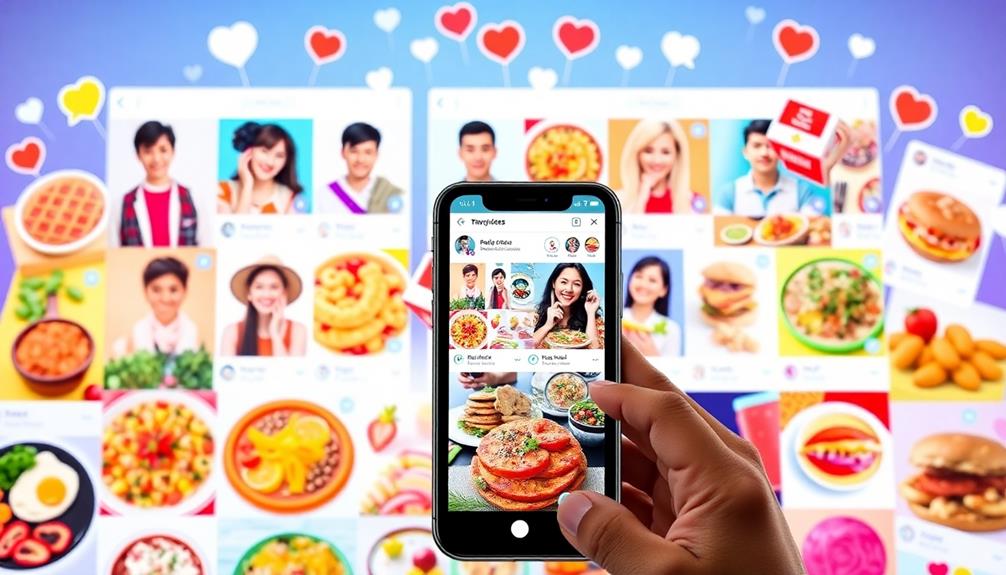
Influencers have become the modern tastemakers in the food industry, shaping what you eat and how you perceive culinary trends. With influencer marketing projected to reach $21 billion in 2023, it's clear that these digital creators greatly impact consumer preferences and food trends.
Their ability to engage followers on platforms like Instagram and TikTok through emotional appeals makes them powerful advocates for brands. For example, seasonal treats like Halloween Delights can gain popularity through influencer promotion, driving festive engagement and unique food presentations.
Here are some key aspects of influencer impact on food trends:
- Authenticity: User-generated content (UGC) feels more genuine than traditional ads, fostering trust.
- Engagement: Influencers drive higher engagement rates, encouraging followers to try new foods.
- ROI: Brands see an estimated $5.20 return on every dollar spent on influencer marketing.
- Trends: Influencers often set trends that resonate with younger demographics who are more receptive to digital marketing.
- Social Influence: Their recommendations can quickly turn niche foods into mainstream sensations.
As social media continues to evolve, the role of influencers in shaping food trends will likely grow, making their impact undeniable in the culinary landscape.
Sustainability and Food Choices
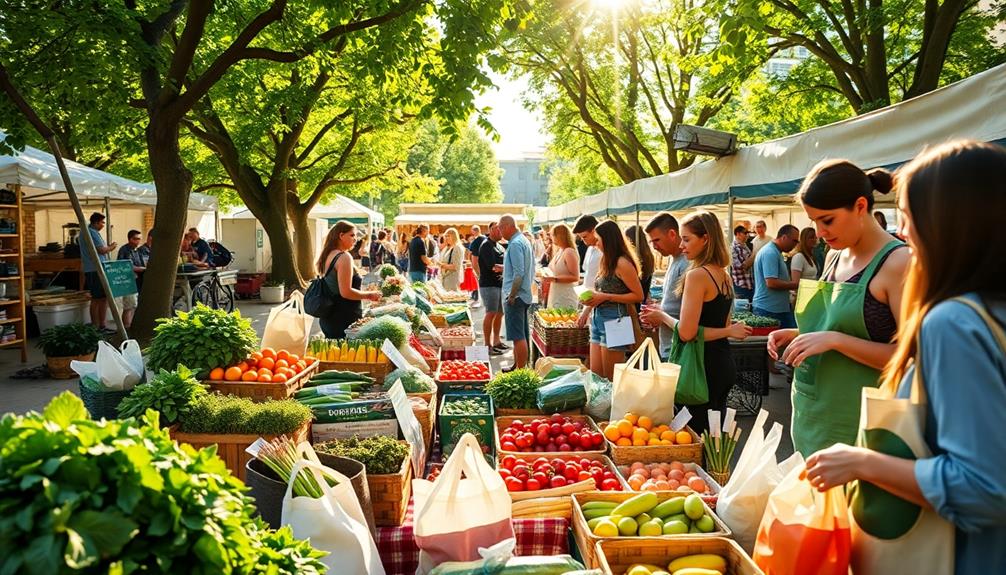
With growing awareness around environmental issues, sustainability is reshaping the way you make food choices. A 2021 survey revealed that 57% of you're willing to alter your eating habits to lessen your environmental impact. This shift is evident in the rise of plant-based diets, which have surged by 300% in the U.S. market, driven by health and sustainability concerns.
Additionally, traditional dishes like Muamba De Galinha emphasize the importance of utilizing local ingredients and cultural heritage in promoting sustainable eating practices.
Millennials and Gen Z are particularly influential in this trend, with 60% of young consumers preferring brands that prioritize sustainable practices. Digital media plays a significant role in shaping consumer behavior; it provides you with transparent labeling and information about food sourcing, which can enhance trust.
Research shows that 73% of you're more likely to buy from brands that clearly communicate their sustainability claims.
Moreover, the demand for local and sustainable food options has led to a 20% increase in community-supported agriculture (CSA) memberships. By supporting local economies and reducing food miles, you actively contribute to sustainability while minimizing food waste.
Ultimately, your food choices reflect a growing commitment to a healthier planet, driven by both personal values and the influence of digital media.
Frequently Asked Questions
How Have Food Trends Changed Over Time?
Food trends have transformed considerably over time. You've likely noticed a shift from home-cooked meals to quick, visually appealing options. Health-conscious choices, like plant-based diets, are now popular, reflecting changing consumer priorities and lifestyle demands. This evolution in food preferences is deeply influenced by societal and environmental factors. For instance, how climate change affects recipes has become a growing concern, as it alters the availability of certain ingredients and encourages the use of sustainable alternatives. As a result, chefs and home cooks alike are experimenting with creative solutions, often opting for locally sourced or seasonal produce to minimize their ecological impact. This focus on sustainability has also sparked renewed interest in traditional cooking methods and the revival of forgotten ingredients, bridging the gap between past and present culinary practices. At the same time, a modern awareness of the history of artificial food coloring has led to greater scrutiny of processed foods, prompting many to seek out natural alternatives for both health and environmental reasons. All these shifts highlight an ongoing journey toward a more mindful and responsible way of eating in today’s ever-changing world.
What Are the Psychological Influences of Food?
When you consider the psychological influences of food, you'll find that visual cues can spark cravings, reshape perceptions of portion sizes, and occasionally lead you to prioritize indulgence over nutrition, altering your relationship with eating.
How Has Social Media Influence Food Trends?
Social media's reshaped food trends by showcasing visually appealing dishes, driving engagement through influencers, and encouraging user-generated content. It can sway your choices, making you crave what's trending while altering your perception of portion sizes.
How Do Technological Advances Change Human Food?
Technological advances change your food experience by prioritizing convenience and immediacy. You embrace delivery apps and online shopping, while social media influences your choices, showcasing visually appealing meals that tempt your taste buds and preferences.
Conclusion
As you navigate the world of food trends, remember that social media plays a huge role in shaping what you eat. In fact, a recent study found that 72% of millennials are influenced by social media when making food choices. This means your emotional connections and the influencers you follow can sway your preferences more than ever. Embracing sustainability in your food choices not only reflects your values but also connects you with a growing community of conscious eaters.
